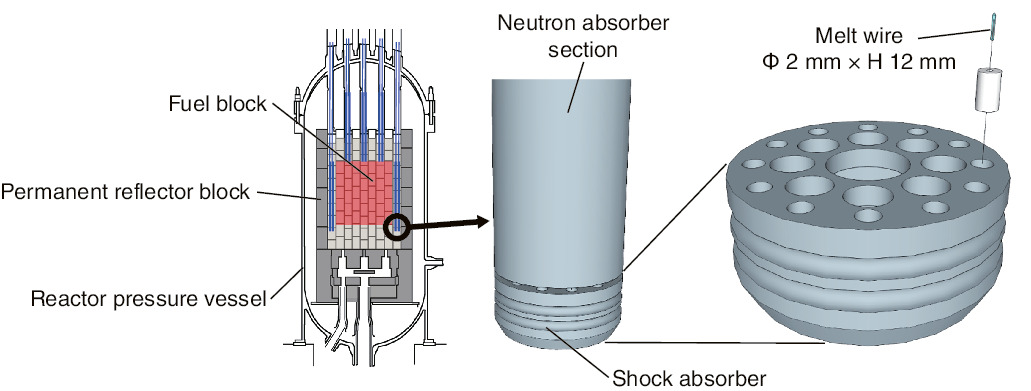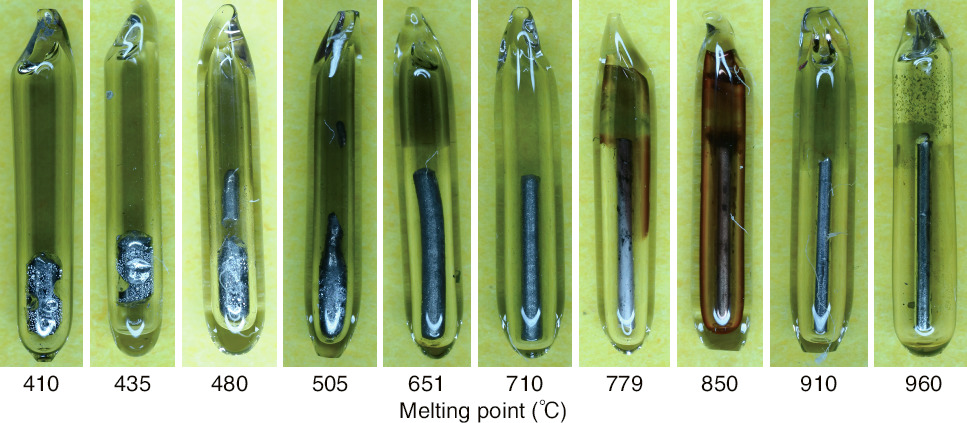
Fig.6-13 Melt wires in the control rod

Fig.6-14 Observational results of melt wires
To improve the design of High Temperature Gas-cooled Reactors (HTGRs), measuring the temperatures of actual reactor cores is necessary to reduce uncertainties in the design analysis. However, measurements of core temperatures are difficult to perform because there are problems with the installation, durability, and corrosion of instrumentation under a super-reducing atmosphere.
In the High Temperature engineering Test Reactor (HTTR), actual measurement data were required because the temperatures of fuel, control-rod cladding, and the heat-transfer tubes of intermediate heat exchangers are close to their design limits. Temperature measurement of control-rod cladding is especially important.
Control rods, which are the only metallic components in the fuel region, are periodically removed from the reactor and maintained. The installation and removal of melt wires can be carried out during such inspections. Melt wires with different melting points were selected due to their excellent features with extremely low risk of failure and high accuracy, and installed in the shock absorber at the lowest tip of the control rod to measure its maximum temperature.
In Germany’s experimental pebble-bed-type HTGR (AVR), the maximum temperature of the core was measured by melt wires, but information concerning measurement position was not recorded. Meanwhile, the data measured by HTTR can be adequately used to improve design technology because measurement position can be identified and accurately controlled (Fig.6-13).
To avoid damage to the control rod by overheating, a two-step control-rod-insertion method was adopted in the HTTR. The control rod used in the highest-temperature case was selected for the measurement as the first step. Twelve types of melt wires with melting points ranging from approximately 400 ℃ to 1000 ℃ were installed in this control rod. The melt-wire observations obtained by CCD camera are shown in Fig.6-14. It was found that the maximum temperature at the measuring position of the control rod is in the range of 505 ℃ to 651 ℃.
On the contrary, the results of thermal-conductivity analysis show that the maximum temperature of the control rod is approximately 800 ℃. The maximum fuel temperature of HTTR is numerically predicted to have a margin of approximately 200 ℃ based on its hot-spot factor. Therefore, the actual measurement result of the control-rod temperature can be used for more reasonable design to reduce the margin.
In the future, we plan to improve our fuel-temperature-evaluation method by clarifying the temperature distribution of the core, and to establish an international standard of HTGR design by measuring the temperatures of other control rods.
<Previous: 6-5 | Next: 7 Research and Development of Fast Reactors>